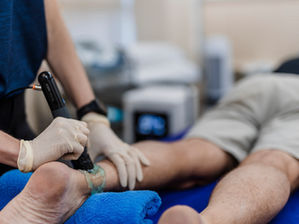Billion-dollar growth slated for city’s north-west
- intouch Magazine
- Jun 20, 2024
- 2 min read
Lake Macquarie City Council is poised to consider a blueprint for growth supporting thousands of new residents and workers and generating billions of dollars of investment across the city’s north-west.
The draft North West Lake Macquarie Catalyst Area Place Strategy, due to be tabled at next week’s Council meeting for public exhibition, outlines planned growth over the next 20 years across Teralba, Speers Point, Boolaroo, Cockle Creek, Argenton, Glendale and Cardiff.
Council’s Manager Integrated Planning Wes Hain said that with the right infrastructure in place, the area could grow to support more than 13,000 new residents, 5200 new homes and 3000 more jobs.
Those jobs are expected to create an extra $6.3 billion of annual economic output for the region.
“The draft place strategy shows how and where this growth could occur, while maintaining and enhancing the area’s heritage, character, public spaces and natural environment,” Mr Hain said.
The strategy is divided into eight precincts, each with its own unique character, identity and opportunities.
One of the most significant opportunities the draft strategy earmarks is in the Cockle Creek precinct.
The draft strategy suggests this area, to be known as Lake Mac Central, could become a “regionally significant urban landmark, highlighting the city’s leading role in the economic diversification of the region and NSW”.
Lake Mac Central spreads across Council-owned land between Cockle Creek train station and the Bunnings roundabout, a much larger parcel of NSW Government land south-east of the roundabout at Boolaroo and other land around the former Pasminco industrial site.
The Council-owned land would play an important role associated with a future transport interchange around Cockle Creek train station, while the NSW Government land would support new commercial and high-density high-rise housing of eight-plus storeys with high amenity public spaces.
Lake Macquarie Mayor Kay Fraser said the Boolaroo land was ripe for development.
“Geographically, it’s right in the centre of the Lower Hunter Region, it’s well-connected by road and rail, and the draft strategy outlines plans for enhanced bus connections in line with forecast growth,” she said.
Much of the growth is contingent on NSW Government investment in infrastructure, including upgrades to key roads, intersections and active transport connections.
It would also rely on rezoning of NSW Government land.
“Achieving the areas potential can only be achieved if we work effectively and efficiently with all levels of government and other key stakeholders,” Cr Fraser said.
“Australia’s housing crisis and its rapidly growing population have been well documented in recent times. Future development like this helps address that, without the need for massive urban sprawl and greenfield development.”
“A blueprint like this also provides some certainty for investors and developers, showing them our vision for the area.”
Council will consider placing the draft strategy on public exhibition for 28 days at its Ordinary Council meeting on 24 June.
North West Catalyst Area growth predictions
Precinct | Now | 2041 forecast |
Boolaroo-Speers Point Precinct | 4810 people 2129 homes | 7182 people 3136 homes |
Cardiff Mixed-Use Precinct | 4920 people 2047 homes | 7258 people 3074 homes |
Lake Mac Central (Cockle Creek) Precinct | 272 people 109 homes | 2550 people 894 homes |
Glendale-Argenton Renewal Precinct | 5576 people 2428 homes | 9903 people 4307 homes |
Glendale Retail and Sport Precinct | 0 people 0 homes | 299 people 207 homes |
Teralba Precinct | 1485 people 587 homes | 2881 people 1148 homes |
Total | 17,063 people 7300 homes | 30,073 people 12,766 homes |



























































